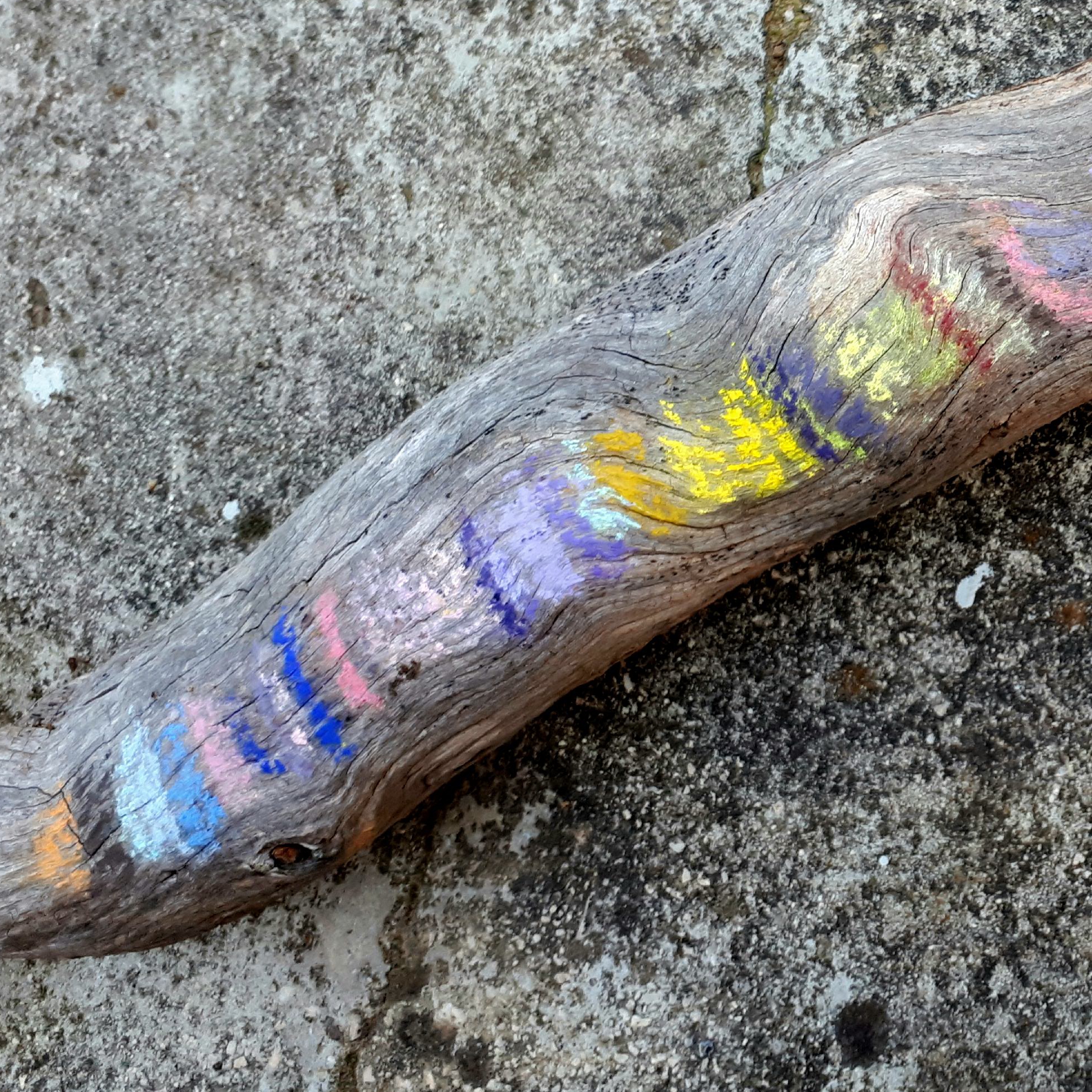THE MYSTICAL CHERRY TREE
This little Native Cherry tree caught my eye as I was traversing a hill one afternoon a couple of months ago. The Native Cherry is always a fresh light or dark green in or out of drought. Perhaps because its roots fix atmospheric nitrogen it always seems to remain healthy especially when seen against the scrubby sparseness of Native Box and the soft greys of the Eucalypts.
This particular tree seemed to burn with a yellowish green fire all of its own and I began the underpainting with a pair of contrasting colours; citrus yellow green for the tree and a cool pink foundation for the taller Eucalypts that surrounded it.
Pink is a good underpainting for grey, and a grey violet would help to differentiate the forest background from the high yellow green note of the Cherry tree.
The base layers in any medium are important because they give a glow and a warmth to the colours laid over them.
The colours I choose in the first hours also act as a memory trace for that first colour sensation, and I often note my first colour choices down on a piece of bark which I carry in my rucksack as a reminder for the duration of the painting.
In this case I also decided to keep a photographic record, something I have started to do since I got hold of a Smartphone as it rather smugly calls itself. But it does have a good camera.
I found the sequence interesting to look at after I had finished the painting and I present the stages here in order to demonstrate some of the processes this particular painting went through from start to finish, and in the hope other artists may be interested to look at them.
I work over many sessions, fixing each layer of pastel with a thin spray of water and yolk of egg as I go, so after a few coats it can be difficult to recall that first colour sensation, the 'Colour Tune'.
This matters, because the immediate colour sensations you have in front of a subject are the truest.
On the day I begin a painting I look first for a simple colour plan by selecting a pair of harmonious contrasting colours on which I can build variations, in order to make from it a painting which will project sensations of space and depth to the eye from a distance, in any light, including and especially twilight. If I can still see everything in the painting with almost no light I am happy with it. Or if I find faults it is easier in this light to identify exactly where they are and to correct them.
I think of this development, from the simple to the much more complex as the symphonic character of painting; just as turning a simple melody into a symphony can be an ambition for a musician turning a simple 'Colour Tune' into a complex and interesting spatial structure can be an worthwhile ambition for a painter.
In the process of repeated workings the colours can go dull on me and pulling them back from a sludge of greys or worst still, discordancies is a task shared by most of the painters I know, as we drink endless flasks of tea in the forest or the studio and work on an uncooperative painting. This is the necessary drudgery of art.
I find that starting directly into colour allows a more dynamic and rhythmical process of composition than tying down all the boundaries with line too early. That can come later when I start to look for a stronger tonal structure. In some ways the whole painting is a colour beginning because it is not completed until the tonal structures and contrasts are fully established and that doesn't usually happen until the final sitting.
I call this Cherry Tree 'Mystical' because in Tasmania every patch of untouched bush seems to consist of infinitely varied forms lit by the impulse of some mysterious, visionary imagination. This little Cherry Tree seemed to feel a part of that so tactfully that I felt I could do no less than to celebrate its simple magic.
